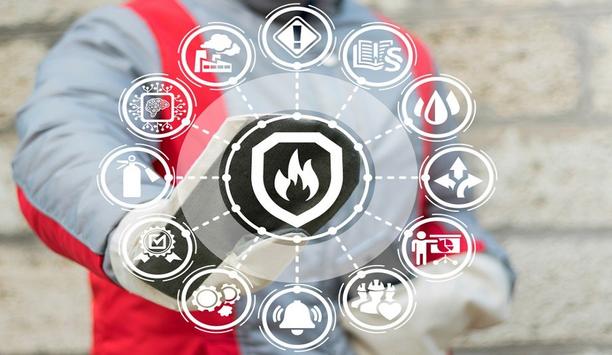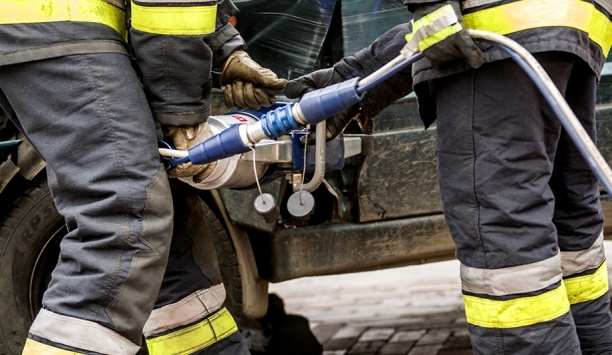Dr Steve Harrison, Product Engineering Manager at ASL Safety & Security, considers certification requirements in the voice alarm (VA) sector and how pending new standards will differ from predecessors. What's new, what should we be interested in, when are the implementation deadlines and what is the best route towards compliance?
With major new voice alarm standards set to come into operation in Britain in 2011 (British Standard EN 54-16:2008 and British Standard 5839 part 8: 2008), engineering managers worldwide are bound to be considering how their products will fare in the UK under new demands and how changes to products can be handled.
There are two important things to consider about British Standard 5839 Part 8: 2008. Firstly, given the advances made throughout the industry over the past 10 years, it is sobering to think that this is a standard whose principal content dates from 1998. Secondly, voice alarm manufacturers should be aware that while it is often quoted as a requirement in system specification documents, British Standard 5839 Part 8: 2008 is in fact a code of practice for the design, installation, commissioning and maintenance of voice alarm systems. While the previous version did describe the requirements of products, the latest version lives up to its title and refers out to EN54-16:2008 for specific product function.
Similarly, it is not possible to comply on a product level with the current standard governing sound systems for emergency purposes, British Standard EN 60849: 1998. The clue ought to be obvious from the title; this is a "system level" specification and any attempt to declare a product compliant to it is likely to be spurious, though this has not stopped several major players in the field alleging third-party accreditation when there is in fact no defined test regime.
While ten years is relatively recent in terms of certification when compared with other sectors, there is still much old-school thinking in the two voice alarm standards we are considering. They were written in an era when audio was mostly analogue, amplifiers were big, hot, unreliable beasts and software control systems were largely frowned upon.
British Standard EN 54-16:2008 may level the playing field in the voice alarm sector
 |
| The new standard will apply directly to any Voice Alarm equipment |
The new standard that is causing interest throughout the British industry is BS EN 54-16:2008 which will apply directly to anything that a manufacturer refers to as Voice Alarm equipment or, more specifically, 'control and indicating equipment.' The distinction is that this is a product specification with a defined regime for testing and it will apply to everything from amplifiers to audio routers, in fact any component that is part of the core functionality of voice alarm.
British Standard EN 54-16:2008 is a standard that has been designed as a means of obtaining third-party accreditation. In the same way that all fire alarm systems have to be accredited by an approved testing house before they can be sold, VA systems are now going to be subjected to similar scrutiny. This is a sea change in the voice alarm sector and will have the welcome effect of levelling the playing field. However, there are enough nursery and fairy tales cautioning us to be careful what we wish for to sound a note of warning. Even so, in contrast with British Standard 5839 part 8: 2008 which gives voice alarm manufacturers no specific guidance on what should be inside their units, British Standard EN 54-16:2008 really does relate to equipment and what products need to do.
The new British Standard 5838 Pt 8:2008 standard requires that voice alarm systems should be classified according to a graduated scale relating to the evacuation plan for a building. The categories are V1 to V5, V1 being the simplest such as the basic situation of a fire alarm panel connected to a voice alarm panel. In the event of the fire alarm going off, the VA simply gives an 'evacuate' announcement. The next two categories have different kinds of emergency microphones as well as elements of manual interaction and manual voice announcement. The highest category, V5, covers a complex alarm system at large installations such as a stadium, transport hub or shopping centre where there is a need for a sophisticated 3-D supervisory GUI such as ASL's iVENCS which can show what is happening at a location and help manage the location in the event of an emergency. To give an idea of scale, a standard London Underground station would be a V2 or V3 while a major national transportation hub like St Pancras International Station in London would be a V5.
Fire alarm guidelines based on voice alarm proximity in British Standard 5839 Part 8
For the first time in the UK, the standard has included recommendations for networked and radio-linked systems and there are configuration requirements for labelling elements. A significant statutory requirement is that connection to a fire alarm interface must be duplicated if the fire alarm is more than 10 metres away from the VA system. The various parties involved in design, installation, commissioning acceptance and verification can look at example certificates for each of those phases. This is a welcome development since certification allows each player to specify exactly what element of the design they have been responsible for.
But while there is clarity with these elements, elsewhere there is ambiguity, notably in the fact that BS 5839:2008 makes reference to British Standard EN 54-16:2008, which does not come into effect until 2011. The present situation is one of flux that should be clarified in a year's time.
Distinct functional conditions in British Standard EN 54-16
A notable aspect of the new standard is that a VA system is required to operate in at least three distinct functional conditions. These are the quiescent condition where it is inactive or simply playing music, an active voice alarm condition where it is evacuating people either through automatic message or manual microphone and a fault warning condition.
The main implication of these conditions for voice alarm manufacturers is how they are indicated and an immediate task may well be to modify the functioning of LEDs in order to be fully compliant. In the case of manual control – a panel with buttons to evacuate certain parts of a building – British Standard EN54-16 requires voice alarm and fault LED indication per zone. There is also a requirement to have only one emergency mic active at any one time while currently we can have different mics active across various zones.
Acknowledging commercial off-the-shelf software
 |
| The new standard requires VA systems to operate in at least three distinct functional conditions |
A significant aspect of British Standard EN54-16 is that the existence of commercial off-the-shelf (COTS) software is acknowledged for the first time. Previously, the convention was that voice alarm systems were designed from the ground up with every element being created in-house to the requirements of previous standards. By contrast, British Standard EN54-16 acknowledges the use of generic operating systems, distributed systems and Ethernet usage. The current conflicting standards will be withdrawn in April 2011 and compliance with British Standard EN54-16 in the EC will become a legal requirement under the European Committee for Standardisation and the Construction Products Directive.
Achieving compliance with British Standard EN54-16
Even a cursory glance at the standard will reveal that there is no scope for cutting corners. Manufacturers will need to co-operate with an accredited test house, ensure all testing is witnessed and will be unable to reuse test results even if they have demonstrably met the required criteria previously. This applies to both electromagnetic compatibility (EMC) testing and environmental testing.
The standard requires functional testing as well as EMC immunity assessment, and while these must be seen to be separate activities it is likely they will be performed together. ASL is currently analysing the requirements of the new standard and has created a separate validating team comprising EMC engineers, technical authors and software testers with the specific role of taking its public address and voice alarm product range through EN54-16 accreditation.
 |
Dr Steve Harrison has worked in the professional audio industry for 20 years and has been jointly responsible for developing voice alarm products at ASL. His track record includes designing the first commercially-available 100V Class D amplifier for the VA market and the initial research he conducted after joining the company remains at the core of the adaptive Class D technology used throughout ASL’s product range. Steve is currently responsible for product design and the management of ASL's team of hardware and embedded software engineers.
















